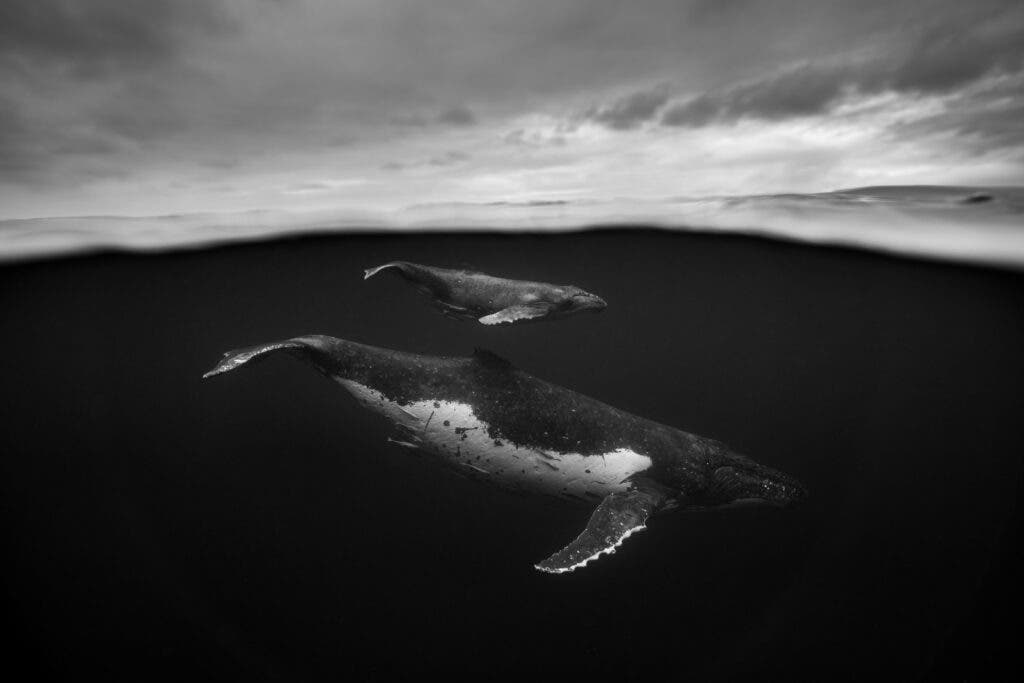
Humpback whales (Megaptera novaeangliae) are some of the most charismatic creatures of the world, thanks to their frequent aerial acrobatic displays and elaborate songs. Every year, these gentle giants migrate from their summer feeding grounds to their winter breeding grounds, and some people are blessed enough to cross paths with them.
Sydney-based photographer Jem Cresswell spent so much time submerged in the southern Pacific Ocean with these humpback whales, he could have easily passed as one of their calves.
For four years between 2014 and 2018, Cresswell took countless shots of humpbacks and their calves off the coast of Tonga, capturing the majestic marine creatures in never-before-seen intimate poses. His incursions into the secret lives of humpbacks have been documented in a 220-page photo book called Giants — and the author has been gracious enough to share some of the book’s material in this article.
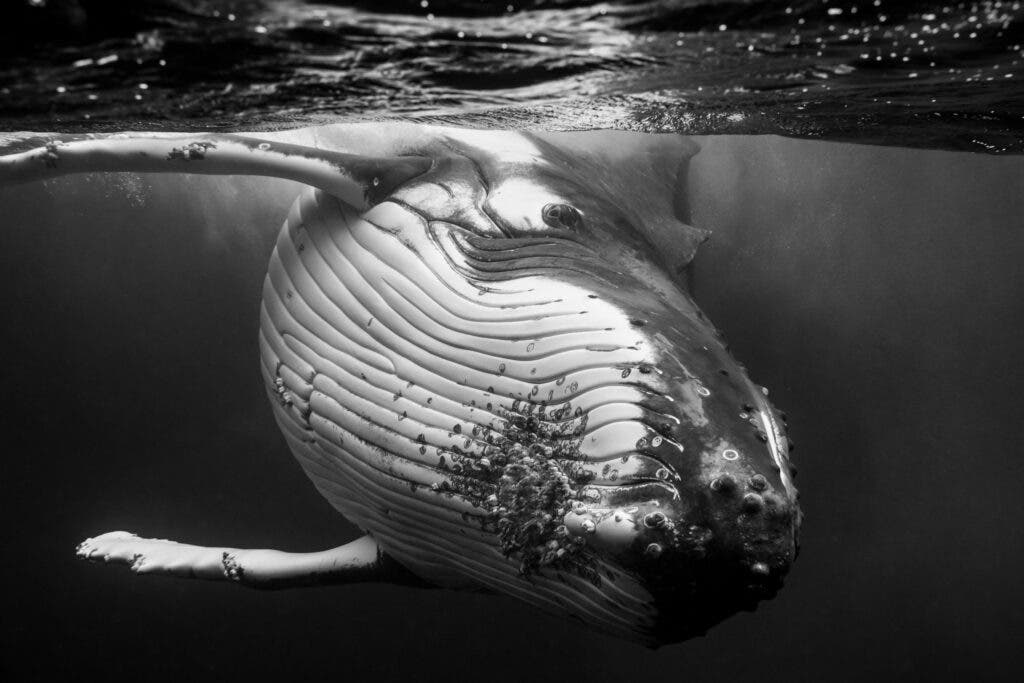
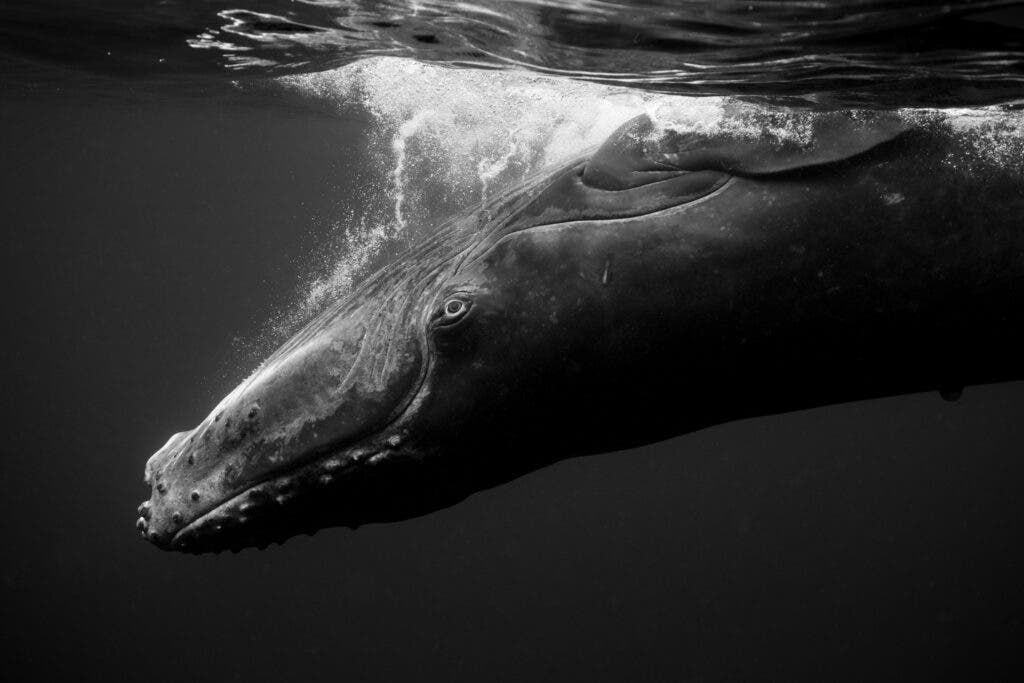
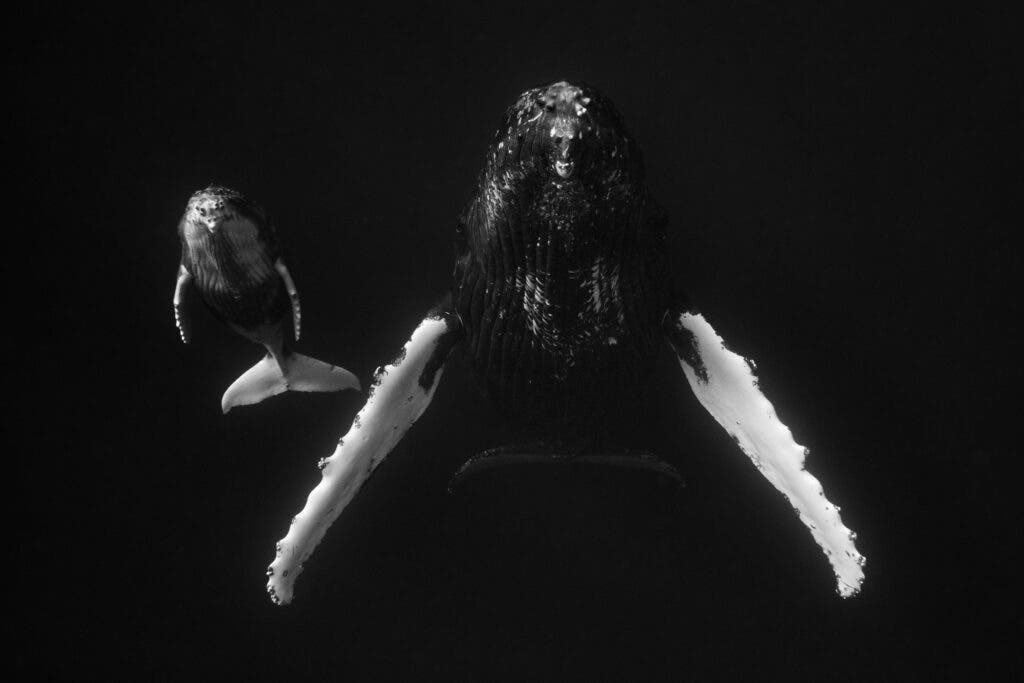
“I grew up exploring the rugged desolate coastline of The Great Australian Bight, surfing, diving, and camping with friends. This sense of escape and freedom grew my love of the ocean.
Below the surface it feels like you’re entering another world, it’s such a multi-sensory experience and there is always something new to see. I initially found it quite intimidating, but now I am in awe of what lives below,” Cresswell told ZME Science.
“I now live on the east coast of Australia where every year numerous whales travel past on migration to the warmer breeding grounds of the pacific. I was initially drawn to humpback whales due to their gentle nature, sheer size, and the feeling of insignificance in their presence. I began this project with the aim of creating portrait images of the humpback whale with eye contact with the camera, on lenses that I would normally use in the studio to photograph the portrait of a human. I wanted to try and capture the expressive emotions and individual personalities of these gentle giants.”

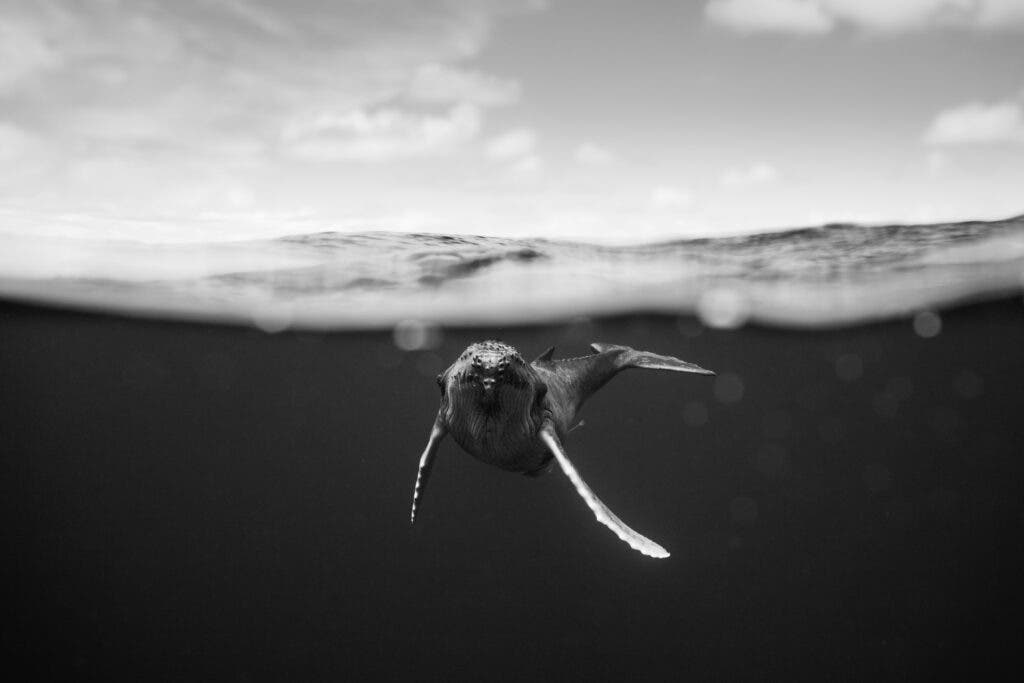
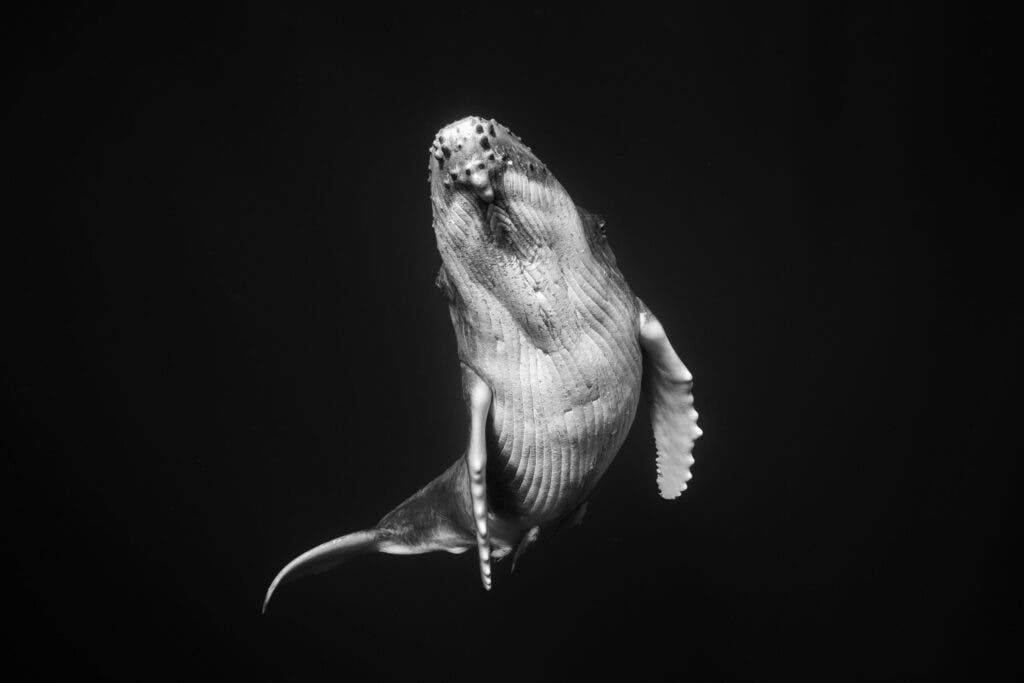
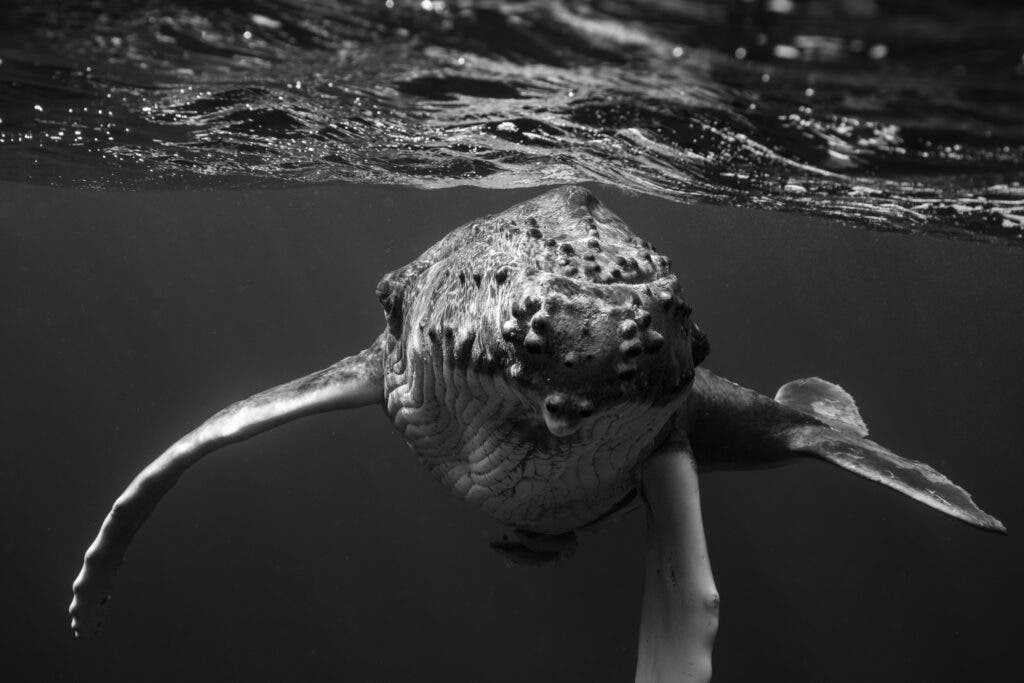
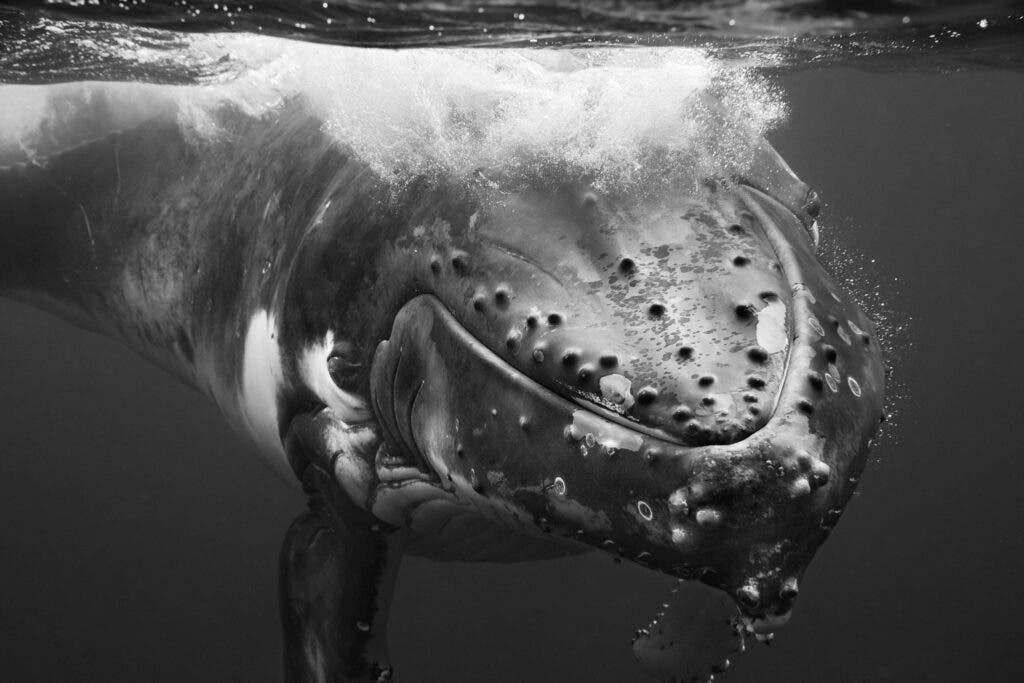
“There is very little you can control underwater, except for the technical side of your camera and your body language. You are at the mercy of the elements, and of the wildlife, which makes it all the more rewarding when everything comes together. The biggest challenge was the pure amount of time out on the water. To have the opportunity to capture the portrait style images I envisioned required a genuinely curious whale to come over to investigate you, which is where the moments of eye contact and interaction were evident. Every encounter with a humpback whale is unique. The possibility of what you might capture is endless, especially when you let these incredible creatures dictate the terms of the interaction,” Cresswell said.
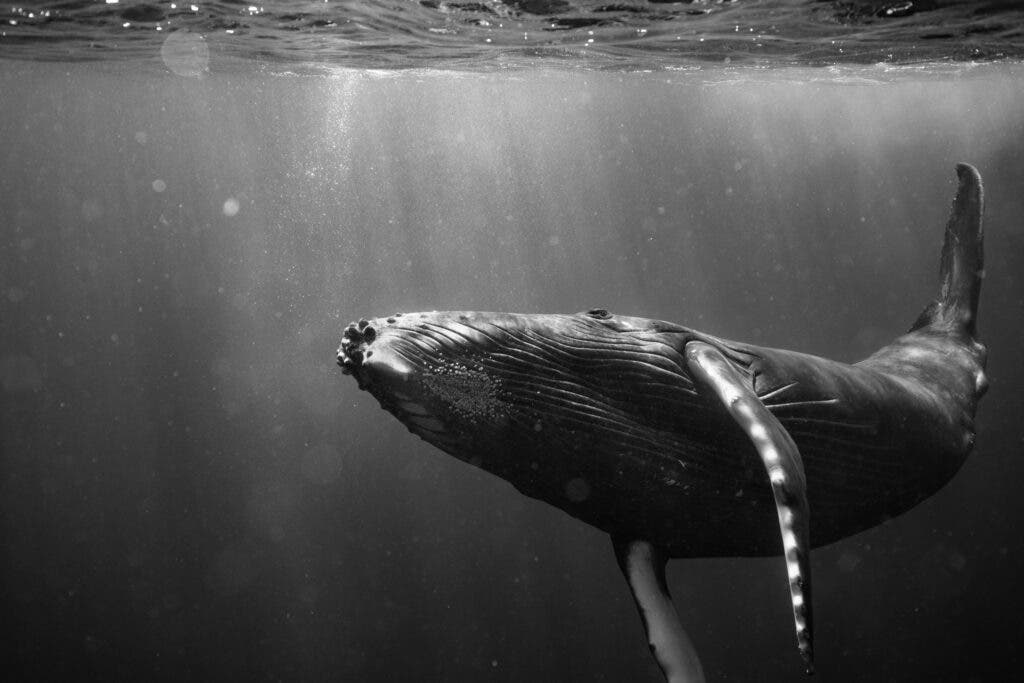

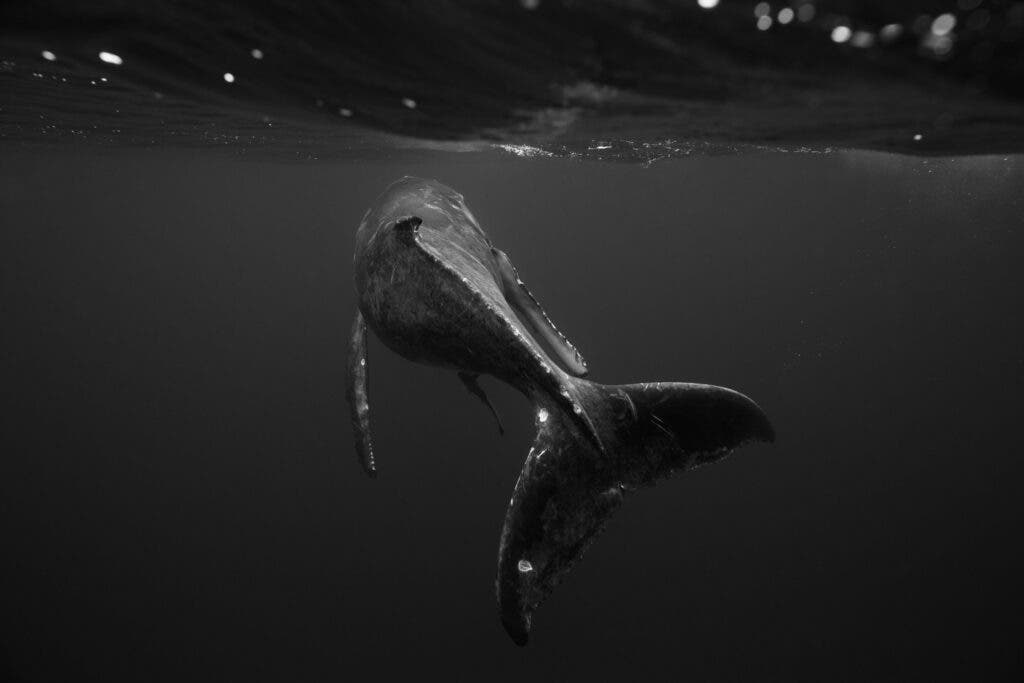
“One of my most memorable moments was with a mother humpback and her young calf. After watching them for a long time, we entered the water from a distance, just floating silently, observing and keeping our heart rate down. After about 15 minutes, we edged closer in short increments, watching their behaviour. Initially mum kept an eye on us, but before long she was closing it, completely relaxed, resting below the surface,” Creswell recounted.
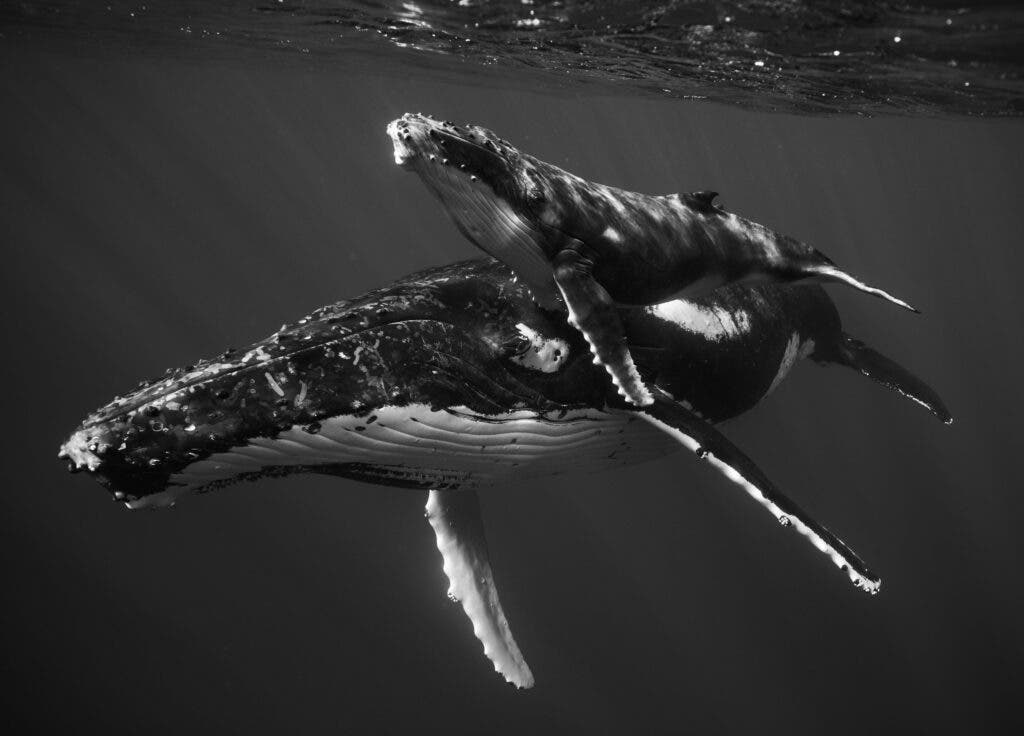

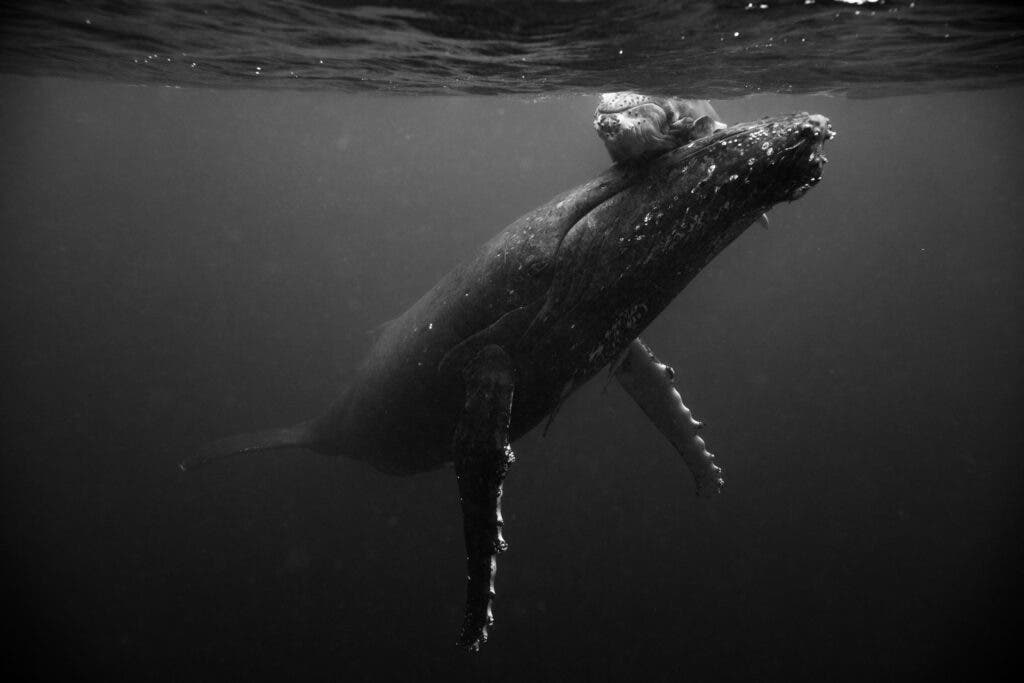

“The small calf was atop mum’s head, using its pectoral fins to hold on. Every so often mum would gently lift the calf to the surface to breathe. The calf would then swim underneath its mother and feed, before taking its place back atop her head. After a while, the calf closed its eyes and rested. The bond between the mother whale and her calf was undeniable and it was a beautiful exchange to witness first hand.”
“Over the following weeks, we swam with the same mum and calf on several occasions. It was amazing to see how much the calf had grown and the confidence she had developed. It’s experiences like this that will always draw me to nature and have taught me a greater appreciation for all life on this planet.”
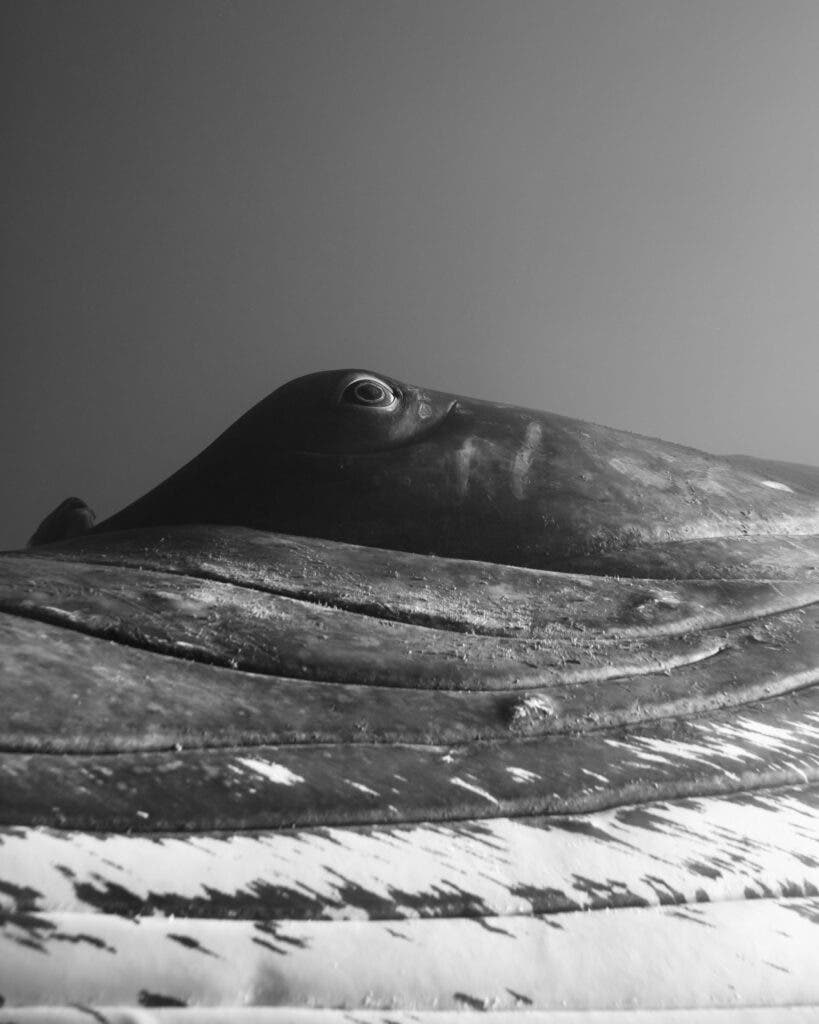
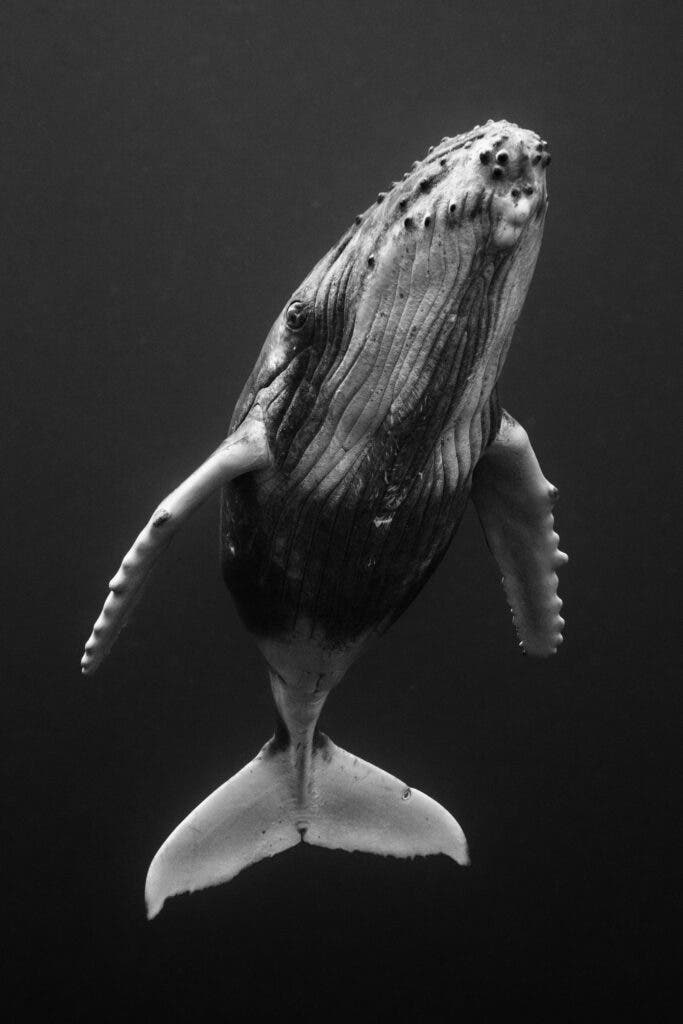
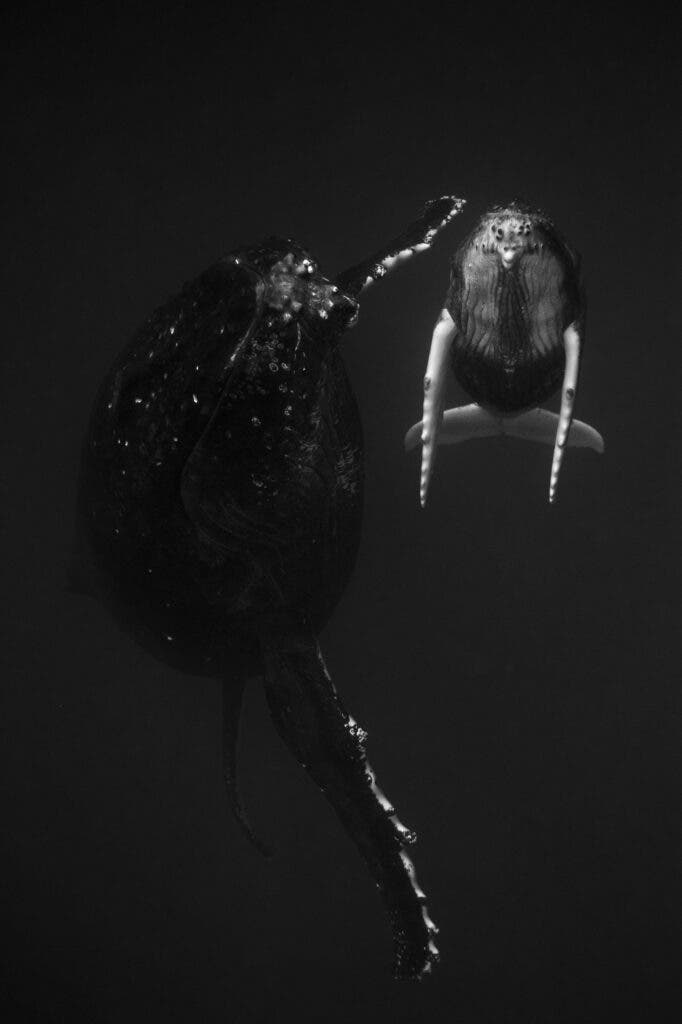
Humpbacks are famous for their exuberant and haunting songs. These complex, lengthy, and distinctive songs are relayed by males to communicate their presence to females and entice them to mate. These sounds range from canary-like chirps to deep rumblings sounds that can be sensed from hundreds of kilometers away. Each humpback population has different songs, and every year the songs change subtly.
“One of the things that fascinate me is that only the male humpbacks sing the complex songs. All of the male humpbacks migrating to the same breeding ground sing the same song, though it may evolve over time. Every few years the song is retired, and a completely new song is created. A study of whale song over a 19-year period has shown that whilst there can be some general patterns, the exact combination of sounds are never repeated. I have been in the water near a male humpback singing, and it was so loud it was causing my whole body to vibrate on the deeper tones,” Cresswell said.
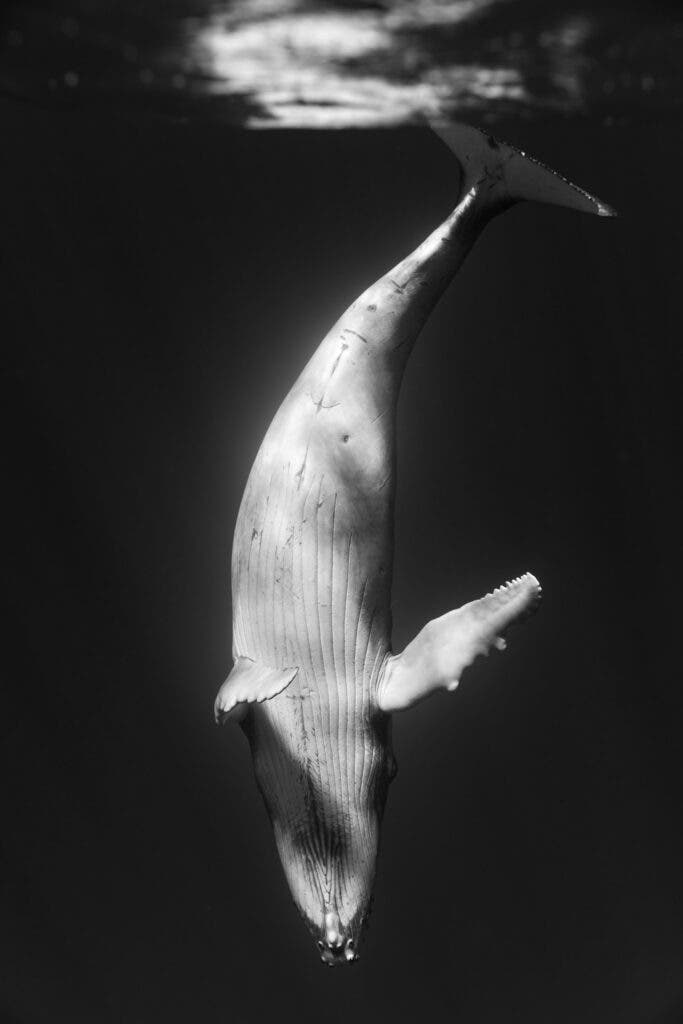
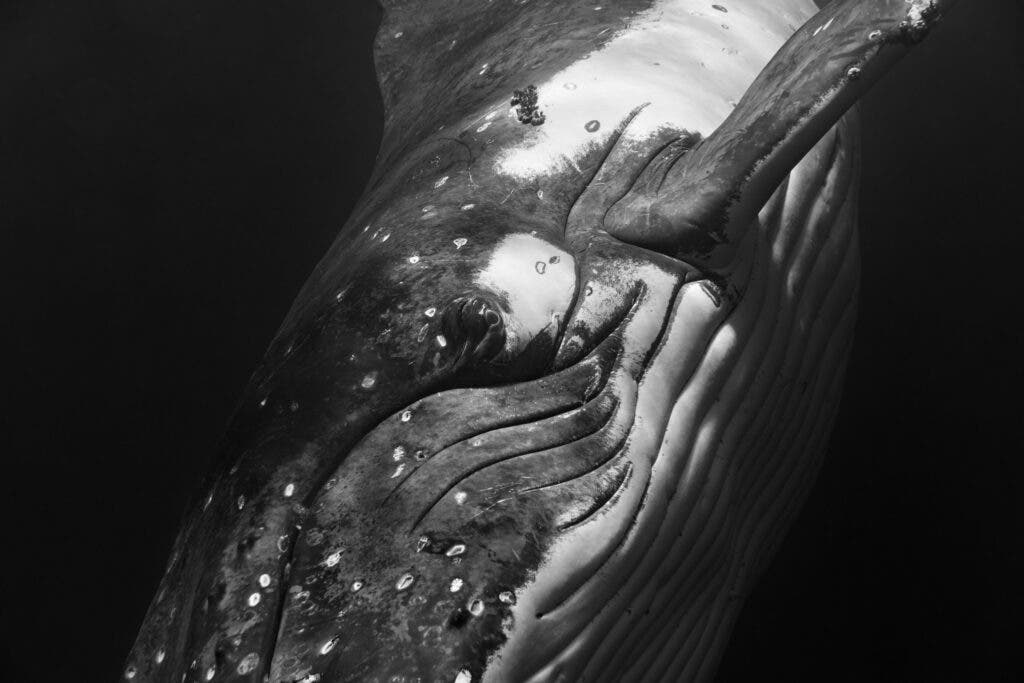
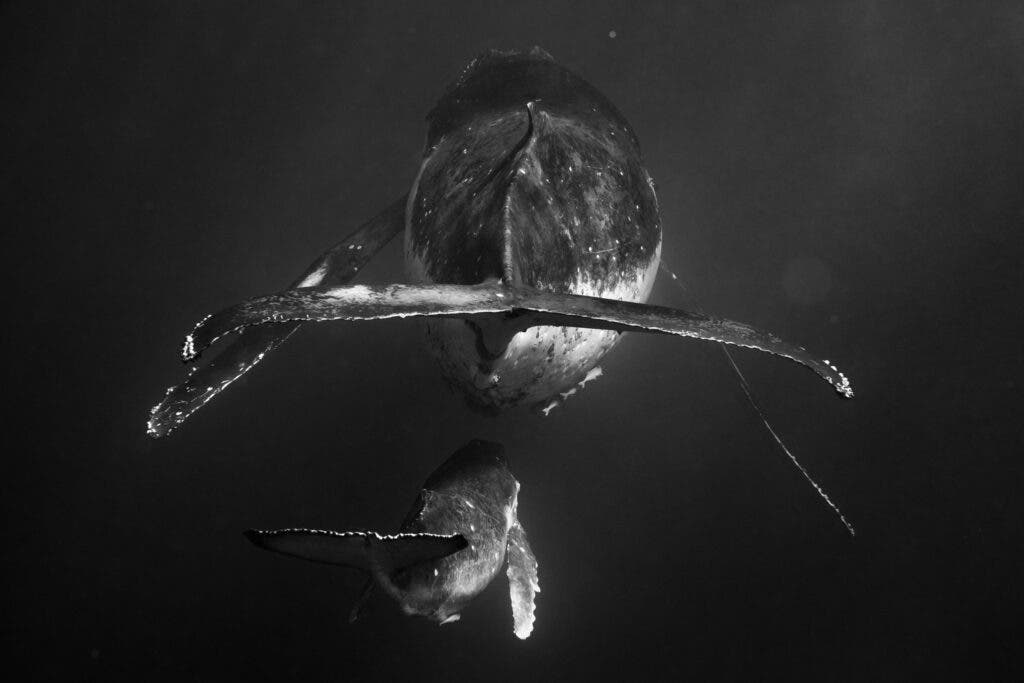
Humpback whales were nearly hunted to extinction once. A 1985 ban on commercial whaling has since helped some populations rebound, although their numbers haven’t nearly recovered to their historical highs. Today, the biggest threats to humpbacks are collisions with ships and entanglement in fishing gear.
“It is amazing to be witnessing the humpback whale numbers slowly recovering, especially after an estimated 200,000 humpback whales were butchered between 1904 and 1980, seeing the global population reduced by 90%. There so much more to be learned from these intelligent and complex creatures. They are worth so much more alive,” Cresswell said.
Cresswell is currently working on a project celebrating the beauty of a particular species found on Australia’s Great Barrier Reef. This project will have an exhibition series, as well as a large video and sound installation, to help people immerse themselves in the experience, the artist told ZME Science.
You can learn more about Jem Cresswell’s projects and buy Giants on his website. Follow Jem on Instagram for more breathtaking underwater photography.
All the photos in this article have been shared with permission from Jem Cresswell. For those curious, he used a Canon 5DS R, 24-70mm F2.8L II and 16-35mm F4L in an Aquatech underwater housing.









